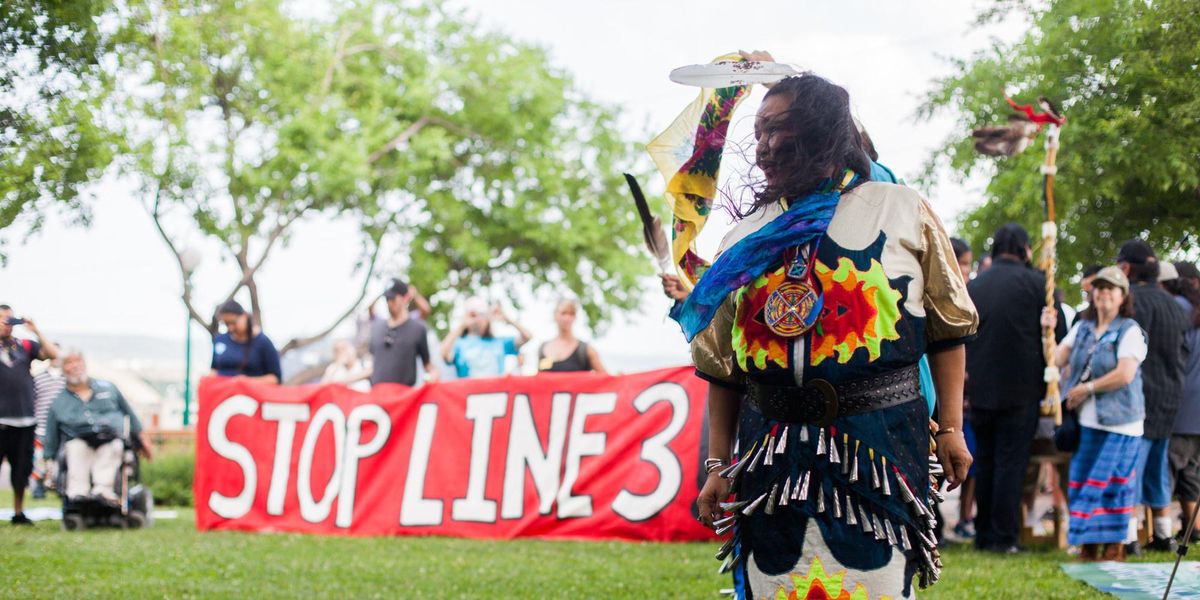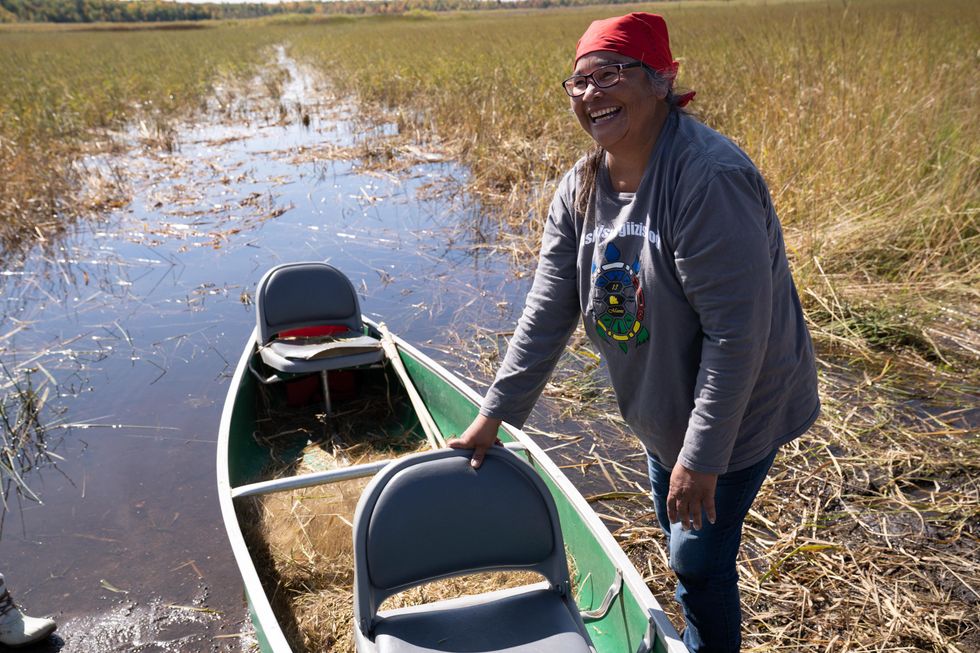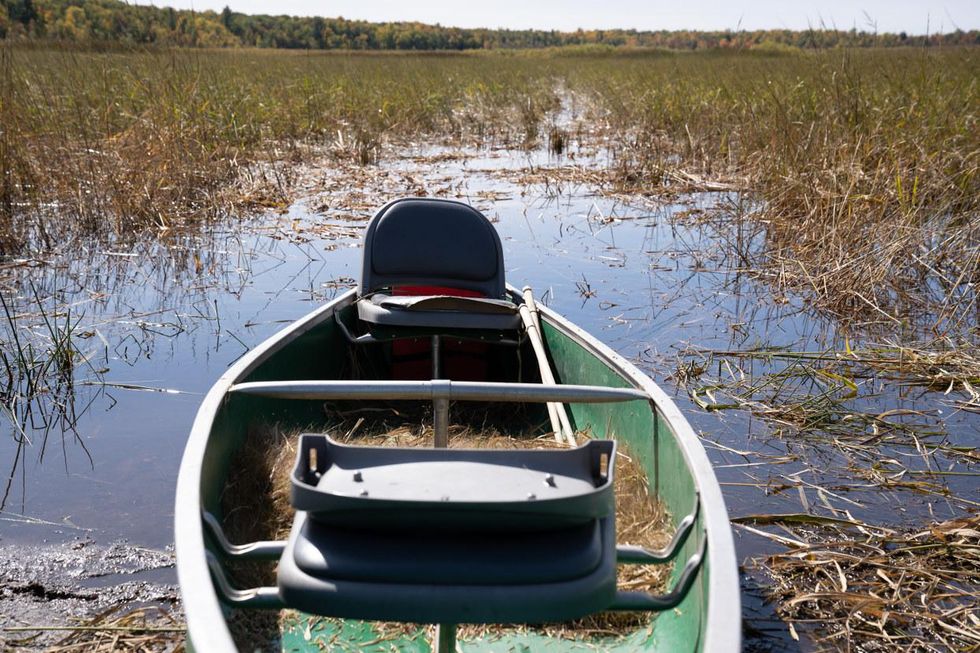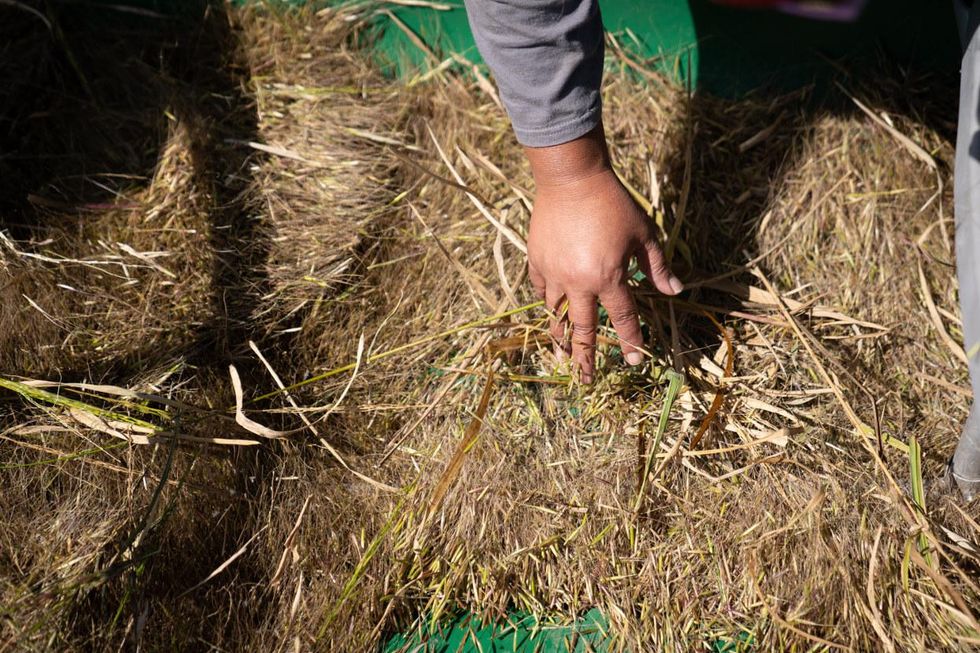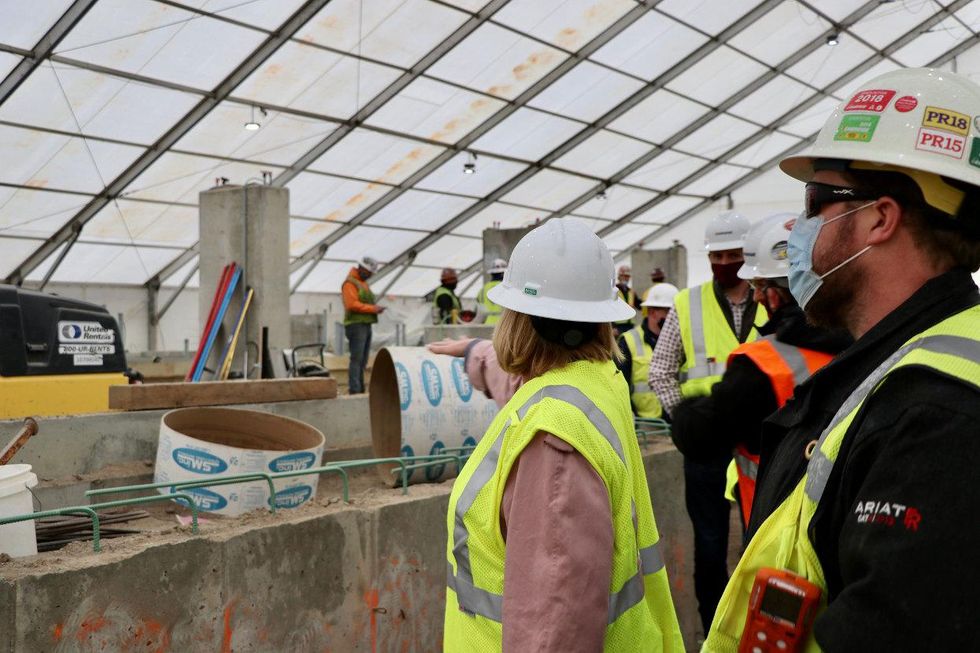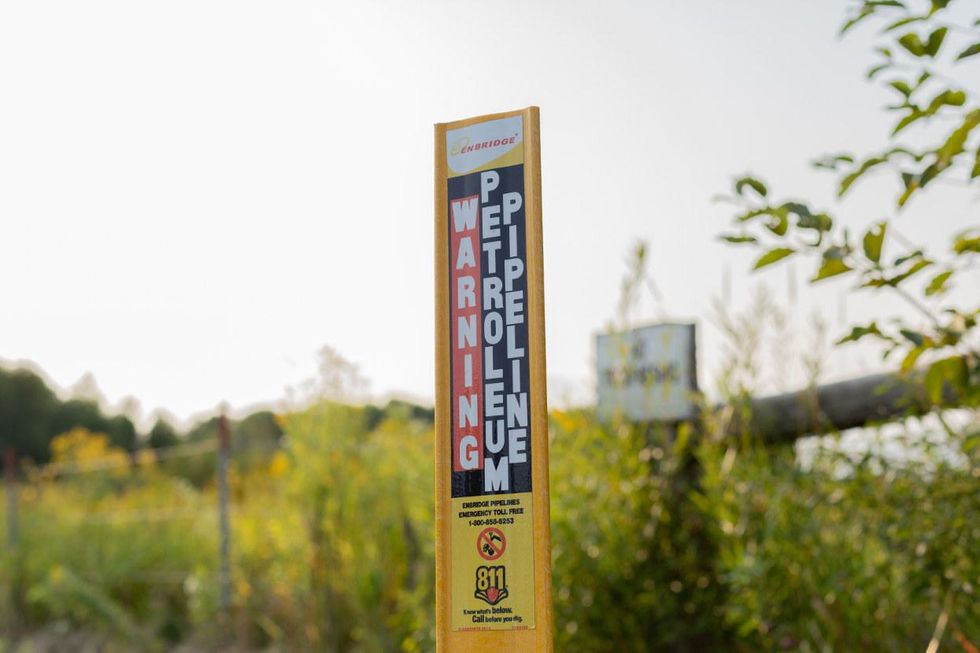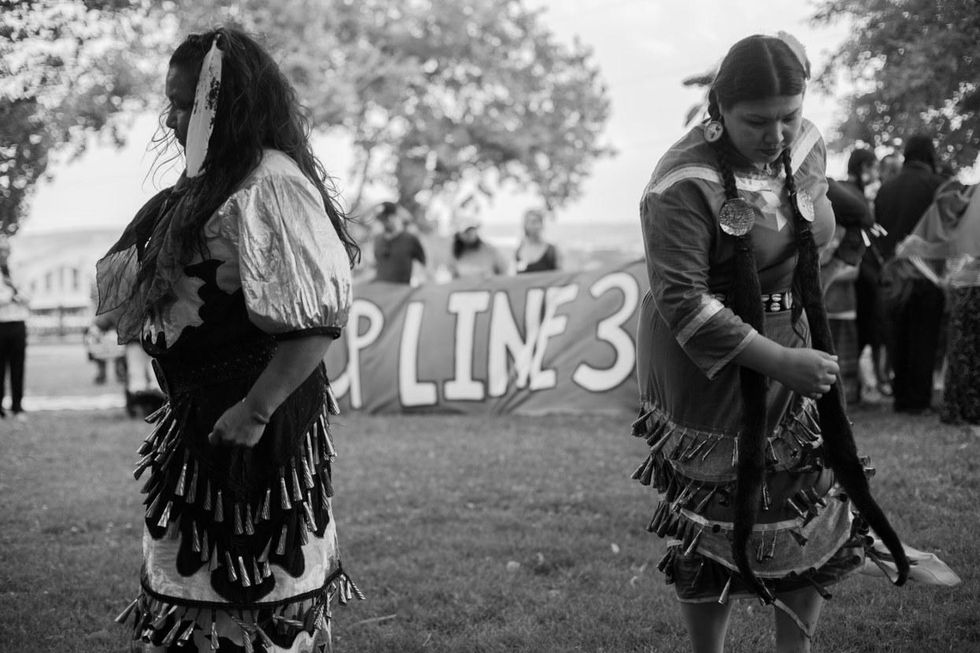How the plastic industry undermines democracy by blocking bans
Companies that profit from plastics are pushing forward laws to keep Americans hooked on disposable plastic products
On a cool, sunny day in March 2020, Ted Harris towed a large net from a boat in Clinton Lake in Kansas and retrieved a sample of microscopic debris in the water.
Harris, an associate research professor at the University of Kansas, was participating in a global study, published in 2023, that looked for microplastics in lakes all over the world.
Tiny plastic particles with a diameter less than 5 millimeters (nanoplastics are much smaller, ranging from 1 to 1,000 nanometers), these particles are harmful to tiny organisms in lakes like zooplankton, that mistake them for food. Larger animals like fish eat the zooplankton, causing the plastic particles to accumulate up the food chain. People can be exposed by eating fish from these lakes. Once in our bodies, they cannot be digested or broken down. “They either get passed through us or they get stuck somewhere inside,” Harris said.
Scientists found microplastics in every lake tested, including Clinton Lake, which is near Lawrence, Kansas and is a popular spot for party boats, swimming and fishing.
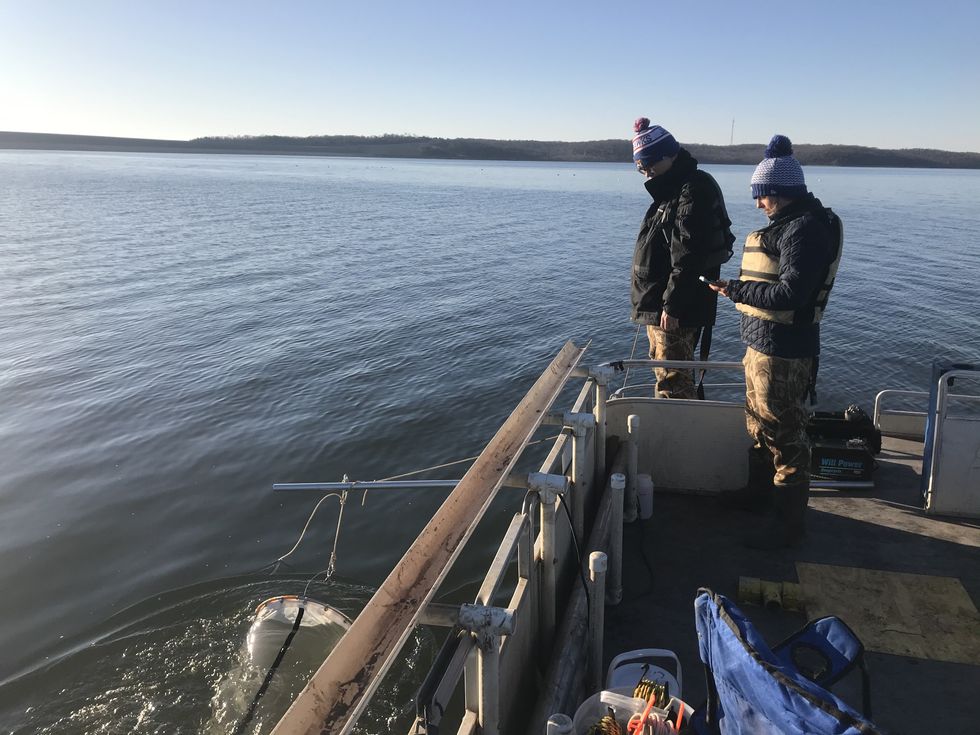
Microplastics are coming from various places — the clothing of people who swim in the lake, and the solo cups and other single-use plastics that end up in the lake and break down into tiny pieces. There is also a plastic manufacturing plant in Lawrence that may be emitting particles. Harris said up to 80% of microplastics come from larger plastic objects that break down.
This year, Lawrence, where Harris lives, passed a plastic bag ban. But the ban came amid a battle in the state. For the fourth year in a row, Kansas lawmakers tried to pass a law that would block local plastic bans. In April, the governor vetoed the most recent bill.
As scientists and the public have learned more about the dangers of micro- and nanoplastics, local governments have passed laws restricting single-use plastics. Various laws ban a range of items, like plastic bags, plastic straws, mini plastic hotel bottles, plastic foodware and polystyrene takeout containers.
In response, the fossil fuel and plastics industries – more than 99% of plastics are made from fossil fuels – have worked together to push state laws that prevent local governments from restricting plastics.
At the behest of these industries, 20 states have laws that block plastic bans, according to Judith Enck, former U.S. Environmental Protection Agency regional administrator and president of Beyond Plastics, a nonprofit working to end plastic pollution. Enck and other experts have called these preemption laws anti-democratic because they block local governments from enacting their own rules.
Lobbyists and industries pushing ban-blocking laws say that allowing cities to set their own rules results in a legal patchwork that would harm businesses because they would not be able to order packaging in bulk. Removing the option of plastic bags forces businesses to either eat higher costs, or pass costs onto customers, they argue. They also argue that the bans hurt businesses that are recovering from the Covid pandemic, and facing supply chain disruptions and inflation.
Harris didn’t know about the effort in Kansas to block plastic bans, but said locals should decide for themselves.
“I wish that communities could decide,” Harris said. “That’s a Kansas value.”
Who is behind the laws blocking plastic bans?
Known as “preemption laws,” the first laws that blocked plastic bans emerged in 2016 and were first proposed by the American Legislative Exchange Council (ALEC), a right-wing group funded by the fossil fuel and plastics industries that drafts and proposes model legislation.
“For preemption laws, and the rapid explosion of them in state houses, it's definitely ALEC that's more responsible than any other group or organization or company,” explained David Armiak, research director with The Center for Media and Democracy, a nonprofit watchdog group, who investigates dark money in American politics.
According to Armiak, the group is a “pay-to-play group. It’s made up of corporate lobbyists and state lawmakers.”
ALEC has a strong relationship with the plastic, chemical and fossil fuel industries. The American Chemistry Council, a prominent trade group that represents chemical companies and subsidiaries of fossil fuel companies like Chevron, ExxonMobil and Shell, has been a member of ALEC’s Energy, Environment and Agriculture Task Force for many years, Armiak said. The ACC lobbies against regulations that threaten plastics; for instance, it spent hundreds of thousands of dollars opposing a New York bill that would reduce packaging waste sent to landfills. The ACC even edited school textbooks to include positive messages about plastic bags. “[The ACC has] fought hard to keep the U.S. hooked on disposable plastic products,” Armiak said.
“I wish that communities could decide.” - Ted Harris, University of Kansas
Among ALEC’s major funders are Koch Inc. and the Koch family, who are deeply involved in petroleum processing, which is used in the manufacturing of plastic bags, according to Armiak. “They've been long-time corporate sponsors of ALEC. They're on the board,” he said.
The group is a “corporate bill mill,” according to ALEC Exposed, a project by The Center for Media and Democracy. Corporations fund almost all of ALEC’s operations and pay for seats on the group’s task forces that approve model legislation. In 2015, ALEC approved a model law for preventing local governments from regulating disposable containers and bags.
After model legislation is approved, ALEC-affiliated state lawmakers introduce the legislation. For example, in 2016, Wisconsin passed a preemption law that was introduced by ALEC lawmakers, according to PR Watch. And in 2019, North Dakota passed a preemption bill similar to ALEC’s model policy. It was introduced by lawmakers affiliated with ALEC, including ALEC’s state co-chair Dan Ruby.
“When you charge for plastic bags, which grocery stores are going to have to pass onto their customers, it impacts people,” Ruby argued, according to Ballotpedia. “We’re already concerned about people not being able to afford food, and stealth taxes like that are just another way to make it more difficult for people to afford groceries and food.”
Once the model legislation is introduced, corporate lobbyists help push it forward. Enck noted that the American Chemistry Council has lobbyists in most state legislatures, giving it the political power to get bills signed into law.
In response, ALEC spokesperson Lars Dalseide wrote in an email that ALEC’s membership “consists of state lawmakers across the political spectrum and private sector leaders who come together in pursuit of principled policy solutions for the states,” and added that the group’s model policy process “begins and ends with state legislators.”
In Kansas, the 2024 bill that attempted to block plastic bans was supported by trade groups associated with the fossil fuel and plastics industry, such as Fuel True, the Koch-backed Americans for Prosperity and the American Recyclable Plastic Bag Alliance (which is associated with the American Chemistry Council). Will Carpenter, chair of the committee that introduced the bill, became a member of ALEC in 2013. EHN reached out to Carpenter for comment but did not hear back.“Profoundly anti-democratic”
Both Enck and Armiak say the way industry passes these laws is anti-democratic.
“When they debate these model policies, they do so behind closed doors. You have to be a member, and the only way you’re a member is if you're a corporate sponsor or right wing sponsor or a state lawmaker. So the public, the constituents, are left out of the process. And this is what's really concerning about ALEC and something that we feel is a huge threat to democracy,” Armiak said.
In response, ALEC’s Dalseide wrote in an email that the group “has always enjoyed a diverse membership with both our public and private partnerships. All ideas are welcome, encouraged, and debated before a model policy is officially adopted. In the spirit of transparency, every model policy is posted online during the review sessions to encourage an informed process.”
“We’re already concerned about people not being able to afford food, and stealth taxes like that are just another way to make it more difficult for people to afford groceries and food.” - ALEC’s state co-chair Dan Ruby.
Enck believes local governments have an important role to play in reducing plastic because they are often responsible for waste disposal. And at the local level, communities often have a better chance of influencing their local government to take action on plastic, rather than trying to appeal to their state legislature or Congress.
“Local governments have slowly been responding. And so what does the plastics industry do? They go to state legislatures and say, ‘Let's block these local government officials from taking action,’” Enck said.
The fossil fuel and plastic industries are “leapfrogging” over local governments, which she qualified as “profoundly anti-democratic.”
The harms of microplastics
These preemption laws are spreading as scientists increasingly find plastics harming people and wildlife.
“When they debate these model policies, they do so behind closed doors." - David Armiak, The Center for Media and Democracy
Besides eating fish from contaminated lakes like Clinton Lake in Kansas, studies show that people can inhale up to 22 million micro- and nanoplastics annually, according to a 2023 report by the Center for International Environmental Law. These particles can enter our lungs and move throughout the body through the bloodstream. They have also been found throughout the human body — in blood, kidneys, lungs, breast milk, and placentas.
As a result, the human health impacts of exposure to chemicals in microplastics is wide-ranging, including asthma, neurodevelopmental disorders, reproductive health impacts, adverse pregnancy outcomes, and decreased antibody responses to vaccines, according to the report. And in cases of chronic exposure, thyroid cancer and lung cancer can develop.Environmentalists, states fighting back

Environmentalists are fighting the preemption laws in two ways — by trying to stop the bills from being passed and repealing those that do pass.
In Kansas, for instance, the Sierra Club rallied people, including municipal leaders, to testify against the preemption bill,” said Jen Hensley, director of state lobbying and advocacy at the Sierra Club.
However, the Kansas bill passed and reached Governor Laura Kelly’s desk. “Frankly, we have relied on the governor at times in Kansas to veto the bill,” Hensley said.
The governor’s veto allowed municipalities like Lawrence to set their own rules on plastic. However, once the laws are passed, they can be overturned, said Enck.
In 2021, Colorado became the first state to strike down its preemption law, allowing local municipalities to enact plastic regulations. The state did so by passing the Plastic Pollution Reduction Act, which also phases out single-use plastic bags and polystyrene containers. Environment Colorado, part of the Environment America network of 30 state climate advocacy groups, was instrumental in pushing the law forward by rallying young people, local residents and small businesses to lobby politicians and gather signatures for petitions.
Pennsylvania also ended its preemption law, but in a different way. The state’s preemption law first passed in 2019, although it was set to expire in one year. In 2020, lawmakers extended the preemption law due to the Covid emergency. After the Covid emergency order was lifted, lawmakers did not extend the preemption and it finally expired in 2021. A lawsuit by a group of towns and cities, including Philadelphia, challenging the state’s preemption law influenced state lawmakers to allow the expiration. The end of the state preemption law allowed Philadelphia to enforce its ban on single-use plastic bags.
In Michigan in 2016, the state passed a preemption law that prevented municipal governments from regulating plastic containers. Lawmakers are now trying to repeal the law by pushing for a ban on the original ban.
Plastic bag ban
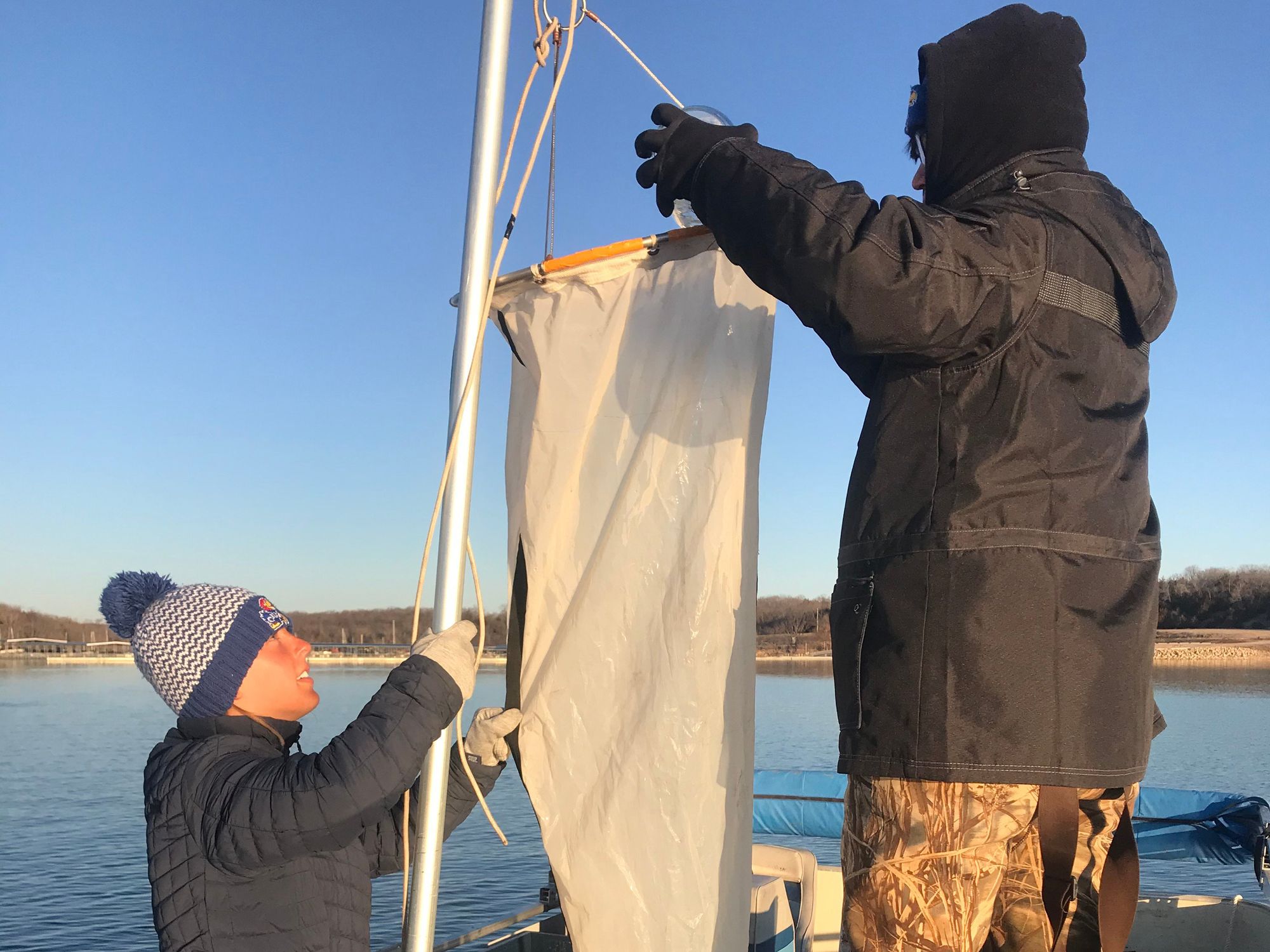
Harris thinks the plastic bag ban has had a small impact in Lawrence. In the windy city, he used to see plastic bags flying through the air and getting caught in tree branches. Now, there appears to be less plastic pollution.
“It's really, really windy here in the Great Plains in the fall. And there are fewer plastic bags blown around in trees around town,” he said.
He said there was “a big stink” over the ban when it was first proposed. “It was this big thing that, oh my god, it's this big, scary thing. And then it actually was not. And at this point, I haven't heard anyone talk about it in two, three months.”
“It’s totally fine,” Harris said, “most people bring their own bags.”
Even as the industry has succeeded in passing preemption laws, states and cities have passed plastic bans. According to Beyond Plastics, as of January 2024, 12 states and more than 500 cities and towns had a plastic bag ordinance in effect.
Enck believes that people are waking up to the harms of single-use plastics.
“I am hopeful,” she said. “You know, for years, the public was lied to and was told you can just recycle all your plastics, and that's not true. … I think, over time, we will be getting rid of single use plastics. The question is, how long is it going to take?”

